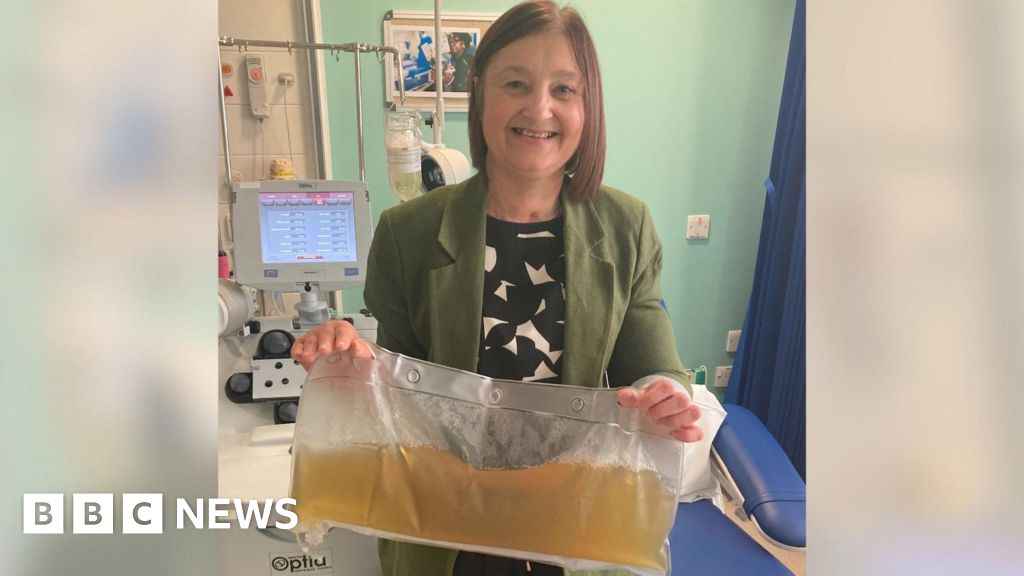WHETHER it’s trying to get our ‘five a day’ or aiming to eat 30 plants a week, many of us follow rules or checklists in order to eat healthily.
It can be helpful to have simple directives to aim for on a daily or weekly basis.
But that doesn’t mean that building nutritious meals is an exact science.
For Duane Mellor, a registered dietitian and Aston Medical School lead for Nutrition and Evidence Based Medicine, it’s less about eating specific foods every day and more about “building patterns of different foods over weeks and months” that matters.
“The key is variety and include a range of foods and try to mix things up, eating just one food is not really good for anyone,” he explained.
Both he and Dr Pamela Mason, a nutritionist and adviser for the General Mills fibre campaign, agreed that we should aim to consume certain groups of foods each week.
From green veggies to berries and oily fish, here’s what you should be adding to your plate daily or weekly.
1. A rainbow of veggies
According to Dr Mellor, eating vegetables every day is key, “but not the same ones”.
“Try to eat two to three different types of leafy vegetables, vary the salad and root vegetables to get different sources of fibre and phytonutrients,” he advised.
Dr Mason advised you get your doses of veggies both through your meals and your snacks.
Most read in Diet & Nutrition
Not only are they a source of fibre, which will keep your gut healthy, you’ll also be consuming “phytonutrients linked with reduced risk of various diseases, such as heart disease”, Dr Mason went on.
She said green vegetables in particular – such as broccoli, kale, Brussels sprouts – “are a source of anti-inflammatory phytonutrients linked with reduced risk of cardiovascular disease”.
“They can be fresh or frozen,” the nutritionist said.
As for Dr Mellor, he advised “look to eat the rainbow”.
“The more variety of colours means a wider variety of polyphenols.”
These are micronutients that occur naturally in plants, which “work via our gut and our body’s systems to help keep us healthy,” the dietitian said.
2. Chicken, turkey and fish
According to Dr Mason, we should be aiming to eat some form of lean protein each day “for growth and development and maintaining muscle mass”.
This can be anything from chicken, turkey, fish and lean red meat to beans and pulses.
“There is no single source that you need to eat daily,” Dr Mason explained.
“Incorporate them into a weekly meal plan and consume them on weekly or on a two-weekly rotation.
“Don’t forget beans as a source of fibre as well as vitamins, minerals and lean protein.”
3. Lentils, peas and beans
Dr Mellor advised you try and eat “pulses or legumes daily, but mix it up between lentils, peas and beans”.
This can even included baked beans, as long as you’re not having the same thing everyday.
“This will also help with fibre to help keep your gut microbiome healthy,” the dietitian said.
4. Apples, berries and oranges
Dr Mason said: “It’s also important to eat fruit each day, again due to its fibre content and its content of vitamins, minerals and phytonutrients.”
Dr Mellor noted that you should still aim to mix up the kind of fruit you’re eating across the week, but you can choose from both fresh and frozen.
“Maybe start with three types and work up,” he advised.
“Apples are great, but so are berries and oranges.”
Dr Mason suggested having blueberries, raspberries, strawberries or fresh or frozen mixed berries daily.
“Consuming berries helps you achieve daily vitamin and mineral and fibre recommendations and they also contain phytonutrients like anthocyanins and flavonoids, which reduce the risk of cardiovascular disease,” she explained.
5. Oats, barley and whole grains
It’s important to get a daily dose of fibre and you can do this by eating either oats or barley, Dr Mellor said.
Both “contain beta glucan, which can help lower cholesterol “.
But don’t think you can only get your fibre boost through porridge.
Try adding some pearl barley to soups and stews, Dr Mellor suggested.
Aside from oats, Dr Mason suggested eating wholegrain bread for its fibre content.
“Oats contain soluble fibre, which helps you feel fuller for longer, whilst wholegrain bread contains a higher proportion of insoluble fibre which can keep the stools soft.
“Increasing fibre has a myriad of benefits including weight management, bowel health and reducing the risk of diabetes,” she explained.
6. Nuts
Dr Mason said: “Nuts are a source of fibre and healthy fats and research has shown that those who consume five or more portions each week had lower risk of cardiovascular disease than those who consumed fewer than one serving of nuts each month.”
Just make sure your nuts aren’t salted or sweetened, and don;t have more than a small handful at a time.
7. Salmon, sardines and mackerel
Finally, it’s worth having a portion of oily fish each week, according to Dr Mason, which amounts about 140g.
Choose from fish like salmon, sardines and mackerel.
Dr Mason said intake of oily fish tends to be low in the UK, with people having 56g instead of the recommended 140g each week.
“Oily fish is a source of omega-3 fatty acids which are important for maintaining heart and brain health,” she explained.
It comes after Japanese researchers estimated that 750,000 fewer deaths would occur worldwide by 2050 if people ate more forage fish — like herring and anchovies — instead of red meat.
How ultra processed is YOUR kitchen?
Ultra processed foods (UPFs) were defined by Brazilian researchers who made the NOVA classification system. It breaks foods into groups depending on how processed they are. The most natural foods are in group 1, while the most processed are in group 4.
The groups do not entirely indicate how healthy a food is. However, it does indicate how processed it is – and studies have linked UPFs to a number of diseases.
How does your kitchen compare to the following groups?
Unprocessed or minimally processed foods (group 1)
- vegetables and fruits (fresh or frozen)
- dried fruits with no added sugar, honey, or oil
- grains and legumes (chickpeas, lentils)
- meat, poultry, fish, seafood, eggs
- milk without added sugar
- plain yogurt with no added sugar
- nuts and seeds
- spices and herbs
- tea, coffee, water
Processed culinary ingredients (group 2)
- iodized salt
- salted butter
- sugar and molasses from cane or beet
- honey extracted from combs
- syrup from maple trees
- vegetable oils crushed from olives or seeds
- butter and lard from milk and pork
- starches extracted from corn and other plants
- vegetable oils with added anti-oxidants
- vinegar with added preservatives
Processed foods (group 3)
- canned vegetables, fruits, and legumes
- fruits in syrup
- salted or sugared nuts and seeds
- salted cured or smoked meats
- canned fish
- artisanal breads and cheese
Ultra-processed foods (group 4)
- pop and fruit drinks
- sweetened yogurt
- sweet or savoury packaged snacks (e.g., cookies)
- candies and cake mixes
- mass-produced packaged breads and buns
- margarines and spreads
- breakfast cereals
- cereal and energy bars
- energy drinks
- instant soups, sauces, and noodles
- poultry and fish nuggets, hot dogs
- many ready-to-heat products: pre-prepared pies, pasta, and pizza dishes

Sarah Carter is a health and wellness expert residing in the UK. With a background in healthcare, she offers evidence-based advice on fitness, nutrition, and mental well-being, promoting healthier living for readers.








